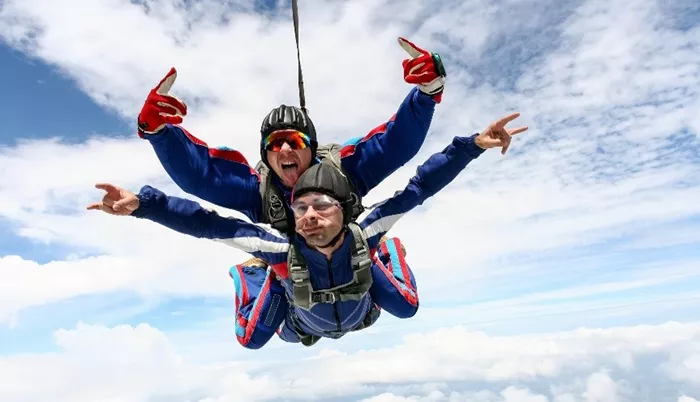Skydiving, an exhilarating sport that combines adrenaline with breathtaking views, offers enthusiasts a unique thrill. However, choosing the right time to skydive can significantly enhance the experience, ensuring optimal safety and enjoyment. Whether you’re a seasoned jumper or a first-timer, understanding the best times to take the plunge can make all the difference.
Understanding Weather Conditions: Key to a Safe Jump
1. Importance of Weather Conditions
Skydiving is heavily dependent on weather conditions. Factors such as wind speed, cloud cover, and visibility play crucial roles in ensuring a safe and enjoyable jump. Understanding how weather affects your jump can help you plan the perfect skydiving experience.
2. Ideal Weather Conditions
The ideal weather conditions for skydiving typically include clear skies, light winds, and good visibility. Clear skies provide unobstructed views during freefall and under canopy, enhancing the overall experience. Light winds (around 10-20 mph) are optimal as they facilitate stable parachuting and landing. High visibility ensures that jumpers can navigate effectively and enjoy panoramic views from altitude.
3. Seasonal Considerations
Skydiving seasons vary depending on your location. In temperate climates, summer and early fall often provide the most predictable weather conditions, making them popular seasons for skydiving. Spring can also be ideal, with mild temperatures and blooming landscapes enhancing the scenery.
Time of Day: Maximizing the Thrill
1. Morning vs. Afternoon Jumps
Choosing between morning and afternoon jumps can impact your skydiving experience. Morning jumps often offer calm winds and clear skies, providing optimal conditions for first-time jumpers and those seeking serene experiences. Afternoon jumps can be more exhilarating with varying wind patterns and changing light conditions, offering a different perspective of the landscape.
2. Sunset Jumps: A Magical Experience
Sunset jumps are favored by many skydivers for their stunning visual appeal. The golden hour light casts a warm glow over the landscape, creating a breathtaking backdrop for freefall and canopy flight. However, sunset jumps require careful planning due to changing light conditions and potential twilight jumps, which add an extra layer of thrill.
Planning Around Your Skill Level
1. First-Time Jumpers
For first-time jumpers, calm weather conditions and clear skies are paramount. Early morning jumps or midday jumps during stable weather windows are recommended to minimize variables and ensure a smooth introduction to skydiving.
2. Experienced Jumpers
Experienced skydivers often seek varied conditions to challenge their skills and expand their capabilities. They may prefer afternoon jumps with moderate winds or sunset jumps for the added visual spectacle. Adjusting your jump time to align with your skill level can enhance both safety and enjoyment.
see also:Exploring The Causes Of Skydiving Fatalities: Understanding Risks And Prevention Strategies
Regional Considerations: Where to Skydive
1. Coastal vs. Inland Locations
Coastal locations often benefit from more stable weather patterns, with sea breezes influencing wind conditions. Inland drop zones may experience more varied wind patterns and thermal activity, requiring careful consideration of local weather forecasts and conditions.
2. Mountainous Terrain
Skydiving in mountainous regions offers unique challenges and stunning scenery. However, mountain weather can change rapidly, requiring close monitoring of weather conditions and adherence to safety protocols. Early morning jumps are often recommended to avoid afternoon turbulence and wind shifts.
Conclusion
Choosing the best time to go skydiving involves careful consideration of weather conditions, time of day, skill level, and regional factors. Whether you’re seeking a serene morning jump or a thrilling sunset experience, planning ahead and staying informed about weather forecasts are key to a safe and memorable skydiving adventure. By understanding these factors and aligning them with your preferences, you can ensure that each jump is a thrilling leap into the skies.
Related topics:
- Lauren Mukheibir’s Journey To The Paris Olympics: South Africa’s Rising Star In Sport Climbing
- Surfing’s First Billionaire Shaper: Who Will Take The Crown?
- Ed Davey Takes Electoral Leap With Bungee Jump In Eastbourne

